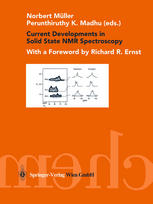

Most ebook files are in PDF format, so you can easily read them using various software such as Foxit Reader or directly on the Google Chrome browser.
Some ebook files are released by publishers in other formats such as .awz, .mobi, .epub, .fb2, etc. You may need to install specific software to read these formats on mobile/PC, such as Calibre.
Please read the tutorial at this link: https://ebookbell.com/faq
We offer FREE conversion to the popular formats you request; however, this may take some time. Therefore, right after payment, please email us, and we will try to provide the service as quickly as possible.
For some exceptional file formats or broken links (if any), please refrain from opening any disputes. Instead, email us first, and we will try to assist within a maximum of 6 hours.
EbookBell Team

4.3
68 reviewsWhy to apply solid-state NMR? - By now, we should have learned that NMR is mainly used for the study of molecules in solution, while x-ray diffraction is the method of choice for solids. Based on this fact, the two recent 'NMR-Nobelprizes' went indeed into the liquid phase: my own one eleven years ago, and particularly the most recent one to Kurt Wuthrich. His prize is beyond any doubts very well justified. His contribution towards the study of biomolecules in solution, in their native (or almost native) environment is truly monumental. We all will profit from it indirectly when one of our future diseases will be cured with better drugs, based on the insightful knowledge gained through liquid-state NMR. Two fields of NMR are still left out of the Nobel Prize game: magnetic reso nance imaging (MRI) and solid-state NMR. The disrespect for MRI in Stockholm is particularly difficult to understand; but this is not a subject to be discussed at the present place. Solid-state NMR is the third of the three great fields of NMR, powerful already today and very promising for the near future.